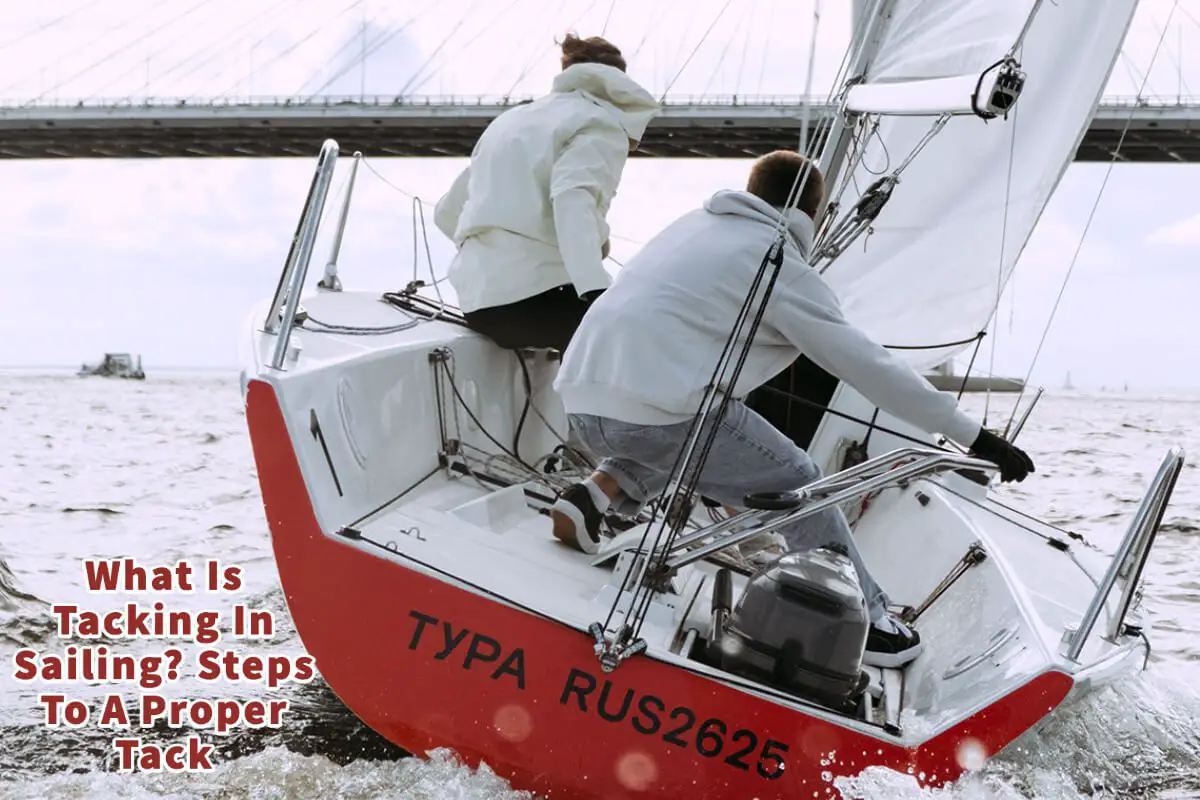When you are sailing, an important maneuver that you need to be able to do is called tacking. Tacking is a fundamental sailing maneuver.
Tacking is when you move the boat’s bow into the wind to turn the boat’s direction. It is a very common maneuver that all sailors must learn to master. But with any sailing maneuver, you must understand the proper steps to do a safe tack.
Table of Contents
- Definition Of Tacking In Sailing
- Proper Steps To Tacking Your Sailboat
- All About Tacking Your Sailboat
- Related Questions
Definition Of Tacking In Sailing
Tacking in sailing is when you move the boat from one direction to another. You move the boat’s bow through the wind to tack a sailboat.
As a sailboat cannot sail directly into the wind, you must usually sail a zigzag course to reach your destination. In other words, you must sail the sailboat zigzag in the direction you want to go while considering where the wind is blowing.
When a sailboat begins to switch from a “zig” to a “zag” motion, it is when you turn the bow of the boat into the wind; this is called a tack.
A few things to remember about a tack are:
- Tacking Is Moving The Bow Of The Boat – In a tack, you move the boat’s bow through the wind to change direction.
- Tack Will Move Through The No-Go Zone – With a tack, and you will move your boat through the No-Go Zone to get to the other side.
- Sail And Boom Change Directions – As you have changed the boat’s direction, the sails and wind will also change direction.
Tacking is an essential maneuver that sailors must learn to move the boat back and forth through the water to catch the wind in their sails.
Proper Steps To Tacking Your Sailboat
Even though tacking is about changing the boat’s direction by turning the bow into the wind, they are proper ways to tack, especially when you have a crew on board the boat.
In sailing, when working with a crew, you must communicate to everyone on the boat what is happening and the maneuvers you will make. Tacking is one of those maneuvers you need to speak to the crew members you are about to do.
Step 1 – Prepare To Tack
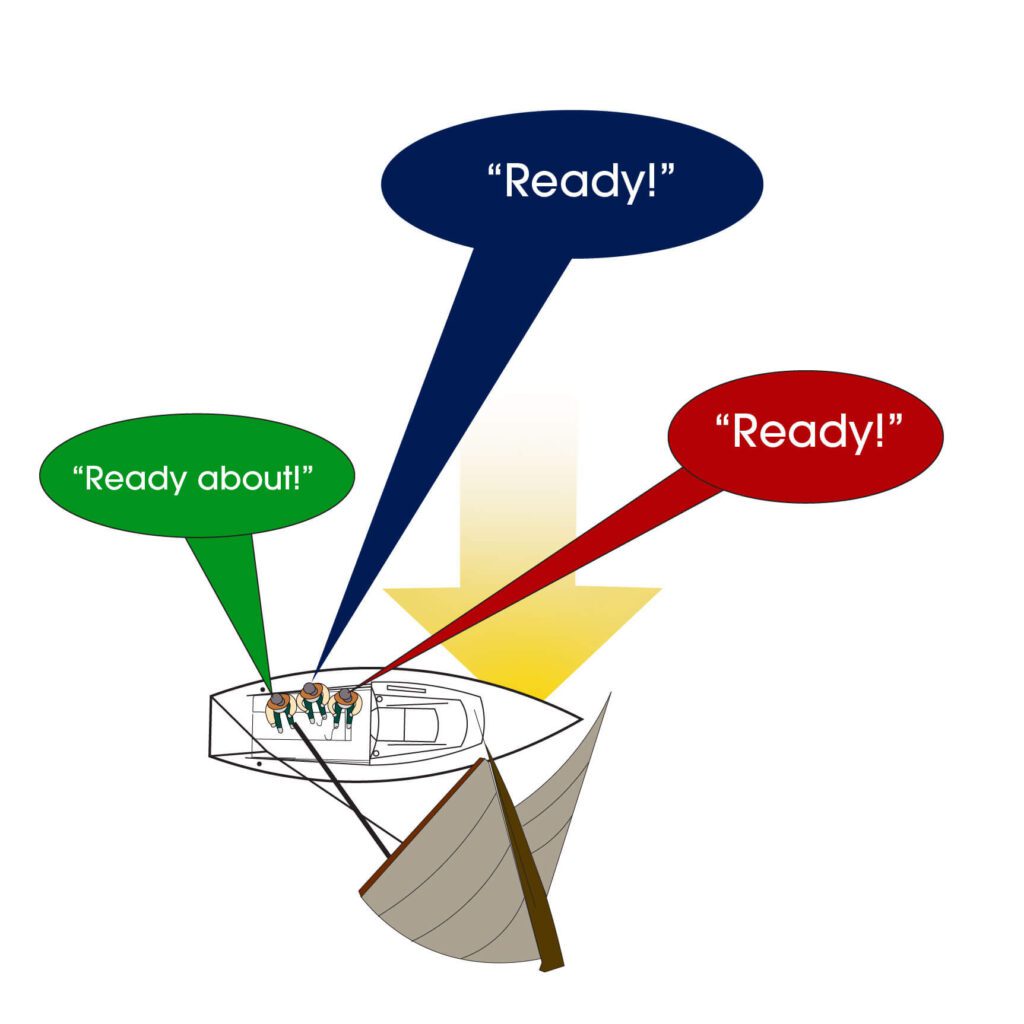
Step one, the boat is on the Beam Reach (on another reach) with the wind coming over the port side of the boat: the helmsman or the captain sailing the boat checks for anything that might be in the way.
He then shouts to the crew something like “Ready About” and “Ready To Tack.” This will alert the crew that they are ready to tack the boat.
At this point, the crew members would also check to ensure the jib sheets were un cleated. The crew will un cleat the jib and shout, “Ready.”
This lets the helmsman know that the boat is ready to be tacked.
Step 2 – The Bow Of The Boat Is Turned Towards The Wind
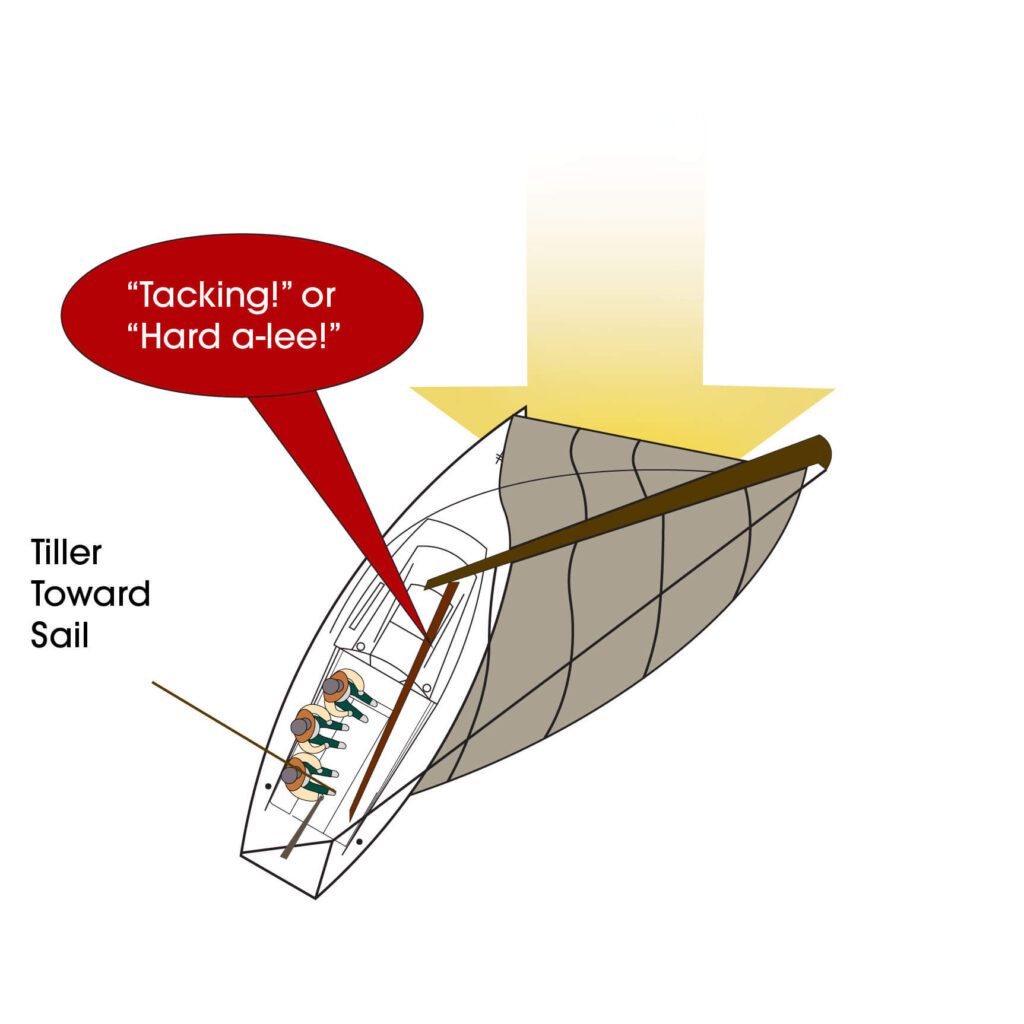
Now that the jib sail is un cleated and the crew has said they are ready, the Helmsman calls out tacking or the more traditional “hard-a-lee!.” This announces the beginning of the tack, and the boat turns towards the wind.
The Helmsman moves the tiller, so the boat turns into the wind; the sails will begin to luft. The tiller is pushed towards the sail. The jib sail is released so that the main sail and the jib sail can move to the other side of the boat.
Step 3 – Helmsman And Crew Cross Over Boat
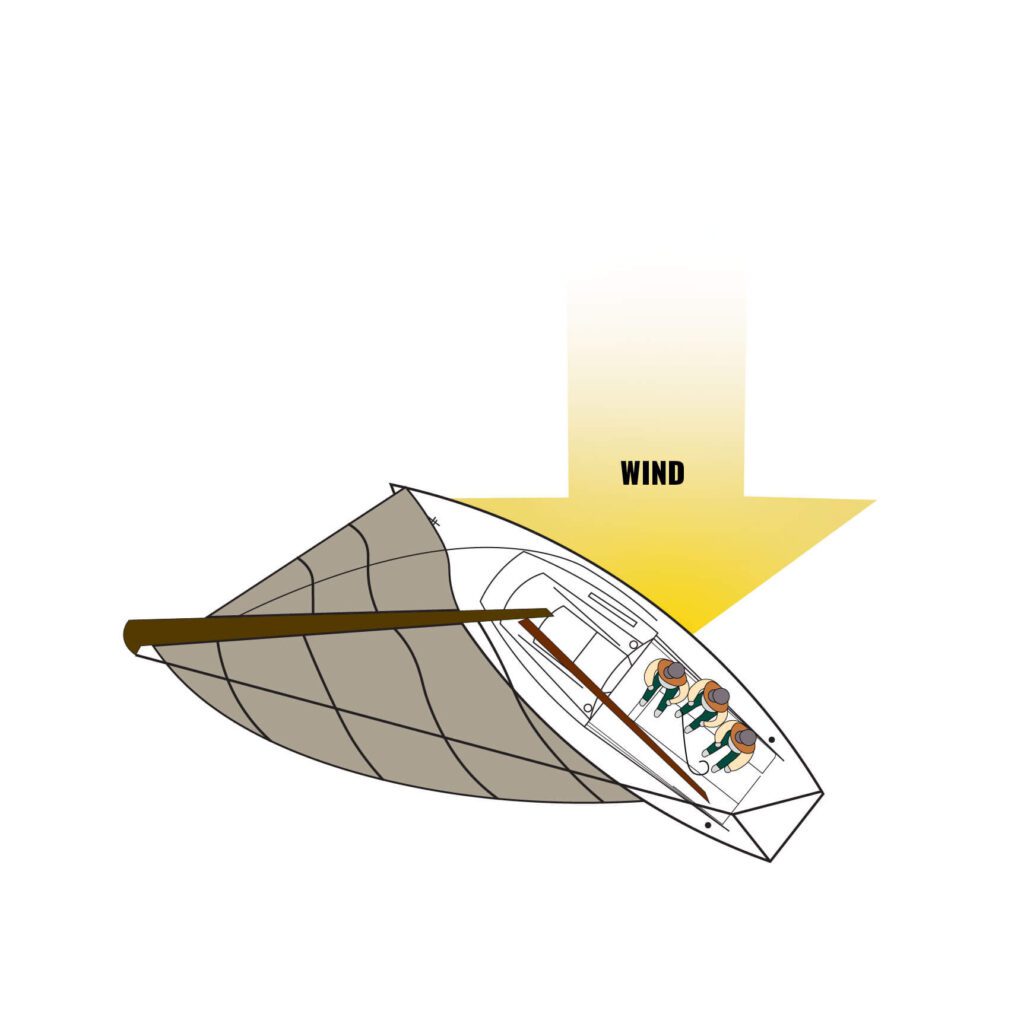
When the sail luffs, the helmsman steers through to the wind, and the wind blows across the bow. Then the helmsman crosses over to the other side of the boat.
The correct way is that the helmsman is to switch the rudder from one hand to another behind their back so that they are always looking forward and looking at the front of the boat. The Helmsman needs to keep their eye on the front of the boat to see what is in front of them and ensure there is no danger or any issues.
Depending on the wind, the crew may cross over to the other side of the boat.
Step 4 – Tack Is Completed
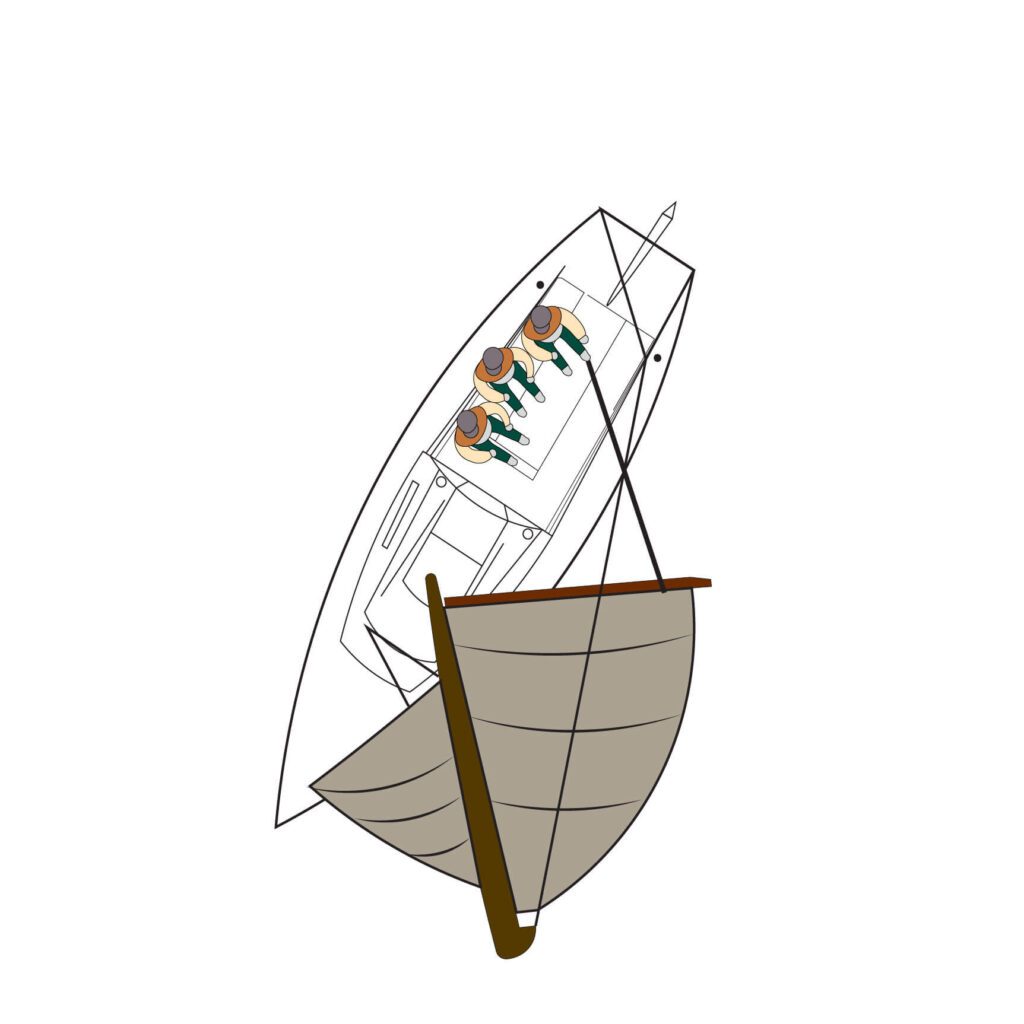
The tack is completed, and the helmsman centers the tiller and steers the boat in the direction they are going. Depending on your boat, the helmsman or crew adjusts the main sail.
The crew will adjust the jib sail for the direction they are going.
All About Tacking Your Sailboat
Tacking is one of those maneuvers that may sound very complicated, but when you start tacking a sailboat, it begins to make sense. It is a sailing maneuver you must practice to get right.
A few things to remember about tacking are:
- Let The Sail’s Luff When Tacking – The main sail and jib sail are not tightened but luffing when you tack.
- You Need To Communicate A Tack – For safety, you must always communicate what you will tack.
- Tiller Go Towards Sail – The helmsman was pushing the tiller towards sail.
- The Helmsman Moves To Another Side While Constantly Looking At The Front Of The Boat – The helmsman will move to the other side while constantly looking at the front of the boat. The helmsman must keep their eyes on the front of the boat.
- Do Not Tighten Sails Until Everyone Is Back In Position – Do not tighten any sails until everyone is back in position and ready to go again.
Tacking is one of those maneuvers you should repeatedly practice when learning to sail. Perfecting your tack moves is necessary even if you are an experienced sailor; this is because tacking is one of those essential yet critical maneuvers every sailor must master.
At A Bus On A Dusty Road, we talk about everything about culture, travel, life, sailing, and ex-pat living. We are all about “Living Life As A Global Citizen.” We explore social, cultural, and economic issues and travel.
We would love to have you be part of our community. Sign up for our newsletter to keep up-to-date by clicking here. If you have any questions, you can contact me, Anita, by clicking here.
Listen to our Podcast called Dusty Roads. You can find it on all major podcast platforms. Try out to listen to one of our podcasts by clicking here.
Subscribe to our A Bus On A Dusty Road YouTube Channel filled with great videos and information by clicking here.
Related Questions
What Is The Best Way To Remember The Points Of Sail When Sailing?
A jibe in sailing is when the boat moves with the stern through the wind. In a jibe, the stern will move through the wind. Like any sailing maneuver, when you have a crew, the helmsman or the captain steering the boat needs to adequately communicate with the crew about what is happening so that they know; this is especially true when jibing.
By clicking here, you can discover What Is The Best Way To Remember The Points Of Sail When Sailing?.
What Is The Sailing Term For “No Wind”?
The term calm or calm is used to describe sailing with no wind, or they’re no wind for you to be able to sell your sailboat. In ancient times, the sailors also used the word tied over to indicate that there was no wind, so they were tied over or stuck without being able to sail.
By clicking here, you can discover What Is The Sailing Term For “No Wind”?
What Is “Sailing Into The Wind” Called?
When sailing into the wind, it is called the “No Go Zone” or sometimes the “No Sail Zone.” Some people may also refer to it as being in irons. All of these terms have the same meaning you cannot sail your boat into the wind because your sails cannot get a pull or push momentum to move your boat forward.
By clicking here, you can discover What Is “Sailing Into The Wind” Called?

